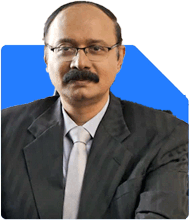
Resp. Sir, I need your guidance regarding Insurance cum guranteed Income Plan. I did purchased ICICI Pru Guaranteed Income For Tomorrow (GIFT) Plan in 2023. I purchased 12 yrs PPT + 2 Year Plan. The annual premium is Rs. 5 Lakh + GST. ( 522500 in 1st year, 511250 for rest of 11 years ). I have paid 2 installment ( 2023 and 2024). Last installment to be paid in March 2034. I have choosed annual Payout. the first payout will start in September 2038 ( as I have chossed save on date) The payout amount will be Rs. 790926- tax free for 25 years ( upto 2062. I will be 95 by 2062). ICICI will return all premium also with 10% bonus. That mean Rs. 6600000/-( 66 Lakhs) will be paid with last payout. Now I am again confused for If I should contimnue or not. Policy is now fully paid after payment of minimum payment of two premium ( it means I will get reduced payout from 2038 onwards). Pl. guide me , 1) If I should continue the payment of premium, 2) what will be the rate of return and XIRR, 3) alternate investment if I discontinue the payment of Premium. Waiting for your reply. Thanks in Advance.
Ans: Your decision to purchase the ICICI Pru Guaranteed Income For Tomorrow (GIFT) Plan reflects a prudent approach to creating a future income stream. The policy offers guaranteed returns and aligns well with long-term financial security. However, it’s essential to carefully assess whether continuing with the premium payments will help you meet your financial goals efficiently.
Let’s evaluate the key elements of this plan, the expected returns, and alternative options to help you make an informed choice.
Key Highlights of Your Current Insurance Plan
Here’s a quick summary of your ICICI Pru Guaranteed Income For Tomorrow Plan:
Premium Payment Term (PPT): 12 years
Annual Premium: Rs 5 lakh + GST (Rs 5,22,500 in the first year, Rs 5,11,250 for the next 11 years)
Annual Payout Start: September 2038
Annual Payout Amount: Rs 7,90,926 (tax-free) for 25 years
Return of Premium with Bonus: Rs 66 lakhs at the end of the payout term in 2062
Evaluation of Returns: Rate of Return and XIRR
Rate of Return: This insurance-cum-guaranteed income plan typically offers returns in the range of 5-6%, which is relatively modest compared to other investment vehicles.
Expected XIRR: Calculating the exact XIRR is complex as it considers both premium payments and the eventual payouts. Given the guaranteed amount, the XIRR is expected to be in the range of 5.5-6.5%.
Opportunity Cost: This return may appear low compared to the potential returns from other investment options like mutual funds, especially when compounded over 12 years. High inflation rates may further erode the purchasing power of the fixed payouts, potentially affecting your financial freedom in the future.
Benefits of Continuing with the Plan
If your primary goal is guaranteed income and stability, here’s why you might consider continuing:
Assured Income: This plan provides a predictable, tax-free income stream for 25 years, helping you maintain cash flow without market risk.
Capital Preservation: With the return of premium and bonus at the end, the plan ensures capital preservation, which may suit a conservative investment outlook.
Tax-Free Income: The payouts are tax-free, which can be beneficial, particularly if you anticipate a high tax bracket in the future.
Considerations for Discontinuing the Plan
Although this plan provides guaranteed income, certain factors may urge you to consider discontinuing:
Lower Rate of Return: Traditional insurance-cum-investment plans generally offer lower returns. These returns may not match the long-term growth rates required for wealth accumulation.
Liquidity Constraints: The plan restricts liquidity since you must commit for 12 years, with no flexible withdrawal options. This can be a drawback if you anticipate needing funds for other investments or emergencies.
Inflation Impact: While the payouts are fixed, the real value of the income will diminish over time due to inflation. Alternative investments can offer growth that more effectively counters inflation.
Alternate Investment Options
If you decide to discontinue premium payments, here are some diversified options to consider for potentially higher returns with a balanced risk:
Actively Managed Mutual Funds: Investing in actively managed funds can offer a blend of equity and debt exposure. Experienced fund managers adjust portfolios to capture market gains while managing risk. Unlike index funds, actively managed funds may outperform due to professional insights. Explore equity mutual funds with a long-term focus for higher returns.
Balanced or Hybrid Funds: These funds offer a combination of equity and debt, reducing volatility while aiming for reasonable growth. Balanced funds are suitable for generating wealth over time, with moderate risk.
Debt Mutual Funds: For conservative growth, debt funds provide stable returns with relatively low risk. Note that debt fund returns are now taxed at your income slab rate, which may affect post-tax returns. Consider debt funds if you prefer a safer, predictable growth without long lock-ins.
Public Provident Fund (PPF): If you haven’t maximized your PPF contributions, this instrument offers tax-free interest and principal, with long-term compounding benefits. PPF is risk-free and provides stable, inflation-protected growth over time.
Sovereign Gold Bonds (SGB): For those interested in gold investments, SGBs offer regular interest income and long-term price appreciation potential. SGBs come with tax-free redemption if held to maturity, providing a hedge against inflation.
Systematic Withdrawal Plan (SWP) in Mutual Funds: An SWP offers regular payouts by systematically redeeming mutual fund units. Unlike insurance payouts, SWPs give you flexibility, and the invested corpus has growth potential, enhancing overall wealth.
Recommendation for Next Steps
To determine whether to continue with the premiums, consider the following steps:
Re-evaluate Your Financial Goals: Consider your long-term objectives and whether guaranteed, fixed returns align with them.
Assess Liquidity Needs: If liquidity is crucial, continuing this plan may limit your ability to allocate funds to better-suited investments.
Discuss with a Certified Financial Planner (CFP): Consulting a CFP can provide tailored insights and assist in calculating the precise XIRR and assessing the tax impact on your returns.
Final Insights
Your current insurance plan provides stability and guaranteed returns, which is suitable if you prioritize capital preservation. However, if wealth accumulation and inflation protection are key, consider exploring other options that offer higher growth potential with some market exposure.
Choosing the right path ultimately depends on balancing security with growth, ensuring that your investments remain aligned with your future financial goals.
Best Regards,
K. Ramalingam, MBA, CFP,
Chief Financial Planner,
www.holisticinvestment.in
https://www.youtube.com/@HolisticInvestment



























